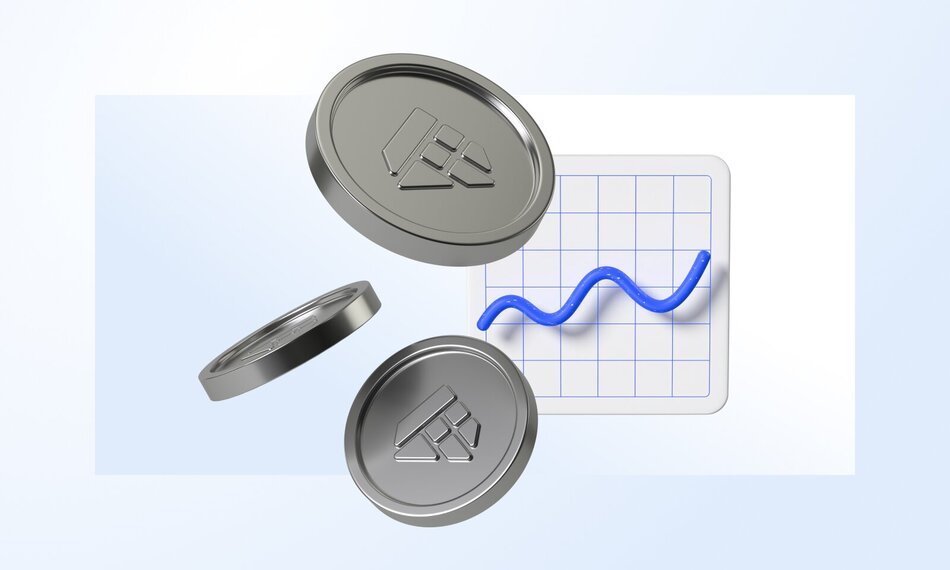Taxes can be a huge financial burden. According to the latest government data, the average American family paid $17,902 in taxes in 2024. Fortunately, if you own rental property, you can reduce your overall tax liability using rental property depreciation. In fact, depreciation is a tax deduction that can help you save over the next few decades.
Arrived makes it easier to take advantage of depreciation benefits without the responsibilities of property management.
What is rental property depreciation? A definition:
At its core, rental property depreciation is a tax benefit that allows real estate investors to spread the cost of owning and maintaining a rental property over its useful life. While that may sound like a lot of jargon, essentially, the depreciation deduction allows you to count some of your operating expenses as a tax write-off against your income for several years.
Put simply, the Internal Revenue Service (IRS) recognizes that, since rental properties undergo a lot of wear and tear, their value doesn’t stay the same forever. Rather than just allowing you to take advantage of a single, large tax deduction during the year that you purchase the investment property, they allow you to distribute your deductions across many years to maximize their benefit.
Currently, tax laws specify that a residential rental property has a useful life of 27.5 years. For commercial properties, the useful life extends to 39 years. As an investor, you are allowed to deduct an annual depreciation expense from your income on your tax return over that many years. After that point, the property wears out, at least for tax purposes.
What kind of real estate properties can depreciate?
However, it’s important to note that not all rental real estate will qualify for depreciation. The IRS has some pretty specific rules on how depreciation works. You can read more about the exact IRS guidelines on their website, but below is an overview of what you can expect:
- You must own the property: In this case, you would need to be considered the owner even if the property is in debt.
- You must use the property for business purposes: It can be a commercial or residential property used to generate rental income.
- The useful life of a property must be determinable: The property can not be expected to last forever. It has to lose value over time and eventually be considered obsolete.
- It must last longer than one year: You cannot depreciate properties held in your portfolio for less than a year.
- You must depreciate property, not land: Since the land value never becomes obsolete, plots of land can not be depreciated. The depreciation expense is only to be used for residential and commercial properties.
When does rental property depreciation start and end?
If you’re newer to real estate investing, you may be wondering when you can start depreciating your rental property to lower your taxable income and when you should stop. Here’s a closer look at how to do it right:
Beginning depreciation for tax purposes
As a rule, you can start tracking the useful life of your property once it’s ready for service, meaning that you’re ready to start renting it out and using it to produce passive income.
For example, let’s say you buy a property on June 15. However, it needs a little TLC, so you take a couple of months to work on it and spruce it up. By the time November 1 rolls around, you’re ready to start marketing your property, and soon after, you can find a tenant to begin leasing the property on January 1.
In this case, you can begin depreciating the property as of November. Since the property was able to be leased and occupied as of that time, that’s when you can start reaping the tax benefits, even though you didn’t begin renting the property until January.
Ending depreciation for tax purposes
On the other end of the spectrum, property depreciation typically ends in one of two ways. You either depreciate the property throughout its useful life or retire it from service.
Let’s look at two examples to illustrate when it is time to stop depreciating your residential rental property.
Scenario one
To start, let’s say you bought a property in 1993 and have been using it as a rental ever since. You’ve taken the depreciation deduction each year. In that scenario, the useful life of the property would have expired during the 2021 tax year. After that time, the property would have reached its total depreciation and could no longer be used to offset your taxable income.
Scenario two
Now, let’s pretend that you bought the same property in 1993. You used it as a source of rental income for many years. However, during the 2015 tax year, you retired and decided to start using the property as a vacation home instead.Here, since the property is no longer being used for a business purpose and is being used as a personal property instead, you no longer qualify for the depreciation deduction. You would have to stop taking it as of the 2015 tax year.
How to calculate rental property depreciation
Now that you have a better understanding of real estate depreciation and its benefits, the next step is figuring out how to calculate depreciation on your rental property.
Before we get into each step of the process, it’s important to note that rental property purchased after 1996 must be depreciated using the modified accelerated cost recovery system (MACRS). However, you can use more than one depreciation method within that system.
This guide explains how to depreciate property based on the general depreciation system (GDS), which applies to most properties. However, if you need to use the alternative depreciation system (ADS) instead, a tax accountant or CPA will certainly be able to help you do so.
With that said, here is a step-by-step guide for calculating rental property depreciation:
Figure out the original cost basis of the property
As a rule of thumb, the purchase price of the property will serve as its cost basis. However, if you want to be more exact, certain closing costs can be included in your basis.
While this is by no means an exhaustive list, you can generally include legal fees, transfer tax, recording fees, title insurance, or any amounts owed by the seller that you paid as the buyer. On the other hand, appraisal fees, mortgage insurance premiums, and credit report costs cannot be included.
Original cost basis example
Let’s say you purchased the property for $200,000. Your starting cost basis would be $200,000.
Separate the costs of land and any structures
As stated above, the value of the land can’t be depreciated because it doesn’t decrease over time. With that in mind, before you can figure out an amount of depreciation, you need to separate the cost of the land from the cost of any structures or buildings. Rental property owners typically base this number on real estate tax values.
Cost of land and structures example
In this example, let’s pretend that the most recent property tax assessment on your $200,000 rental property values the property at $205,000. Of that amount, 85% of the total value comes from the property, while the remaining 15% comes from the land.
Determine the basis for the rental property itself
Using those numbers, you can find your cost basis for the rental property by attributing those real estate tax percentages to your purchase price.
Rental property basis example
In this example, 85% of the purchase price would be attributed to the rental property structure, and 15% would be the land. Your calculations would be as follows:
- Rental property basis: 85% of $200,000 = $170,000
- Land basis: 15% of $200,000 = $30,000
Make adjustments to the basis if necessary
Sometimes, adjustments may need to be made to your property basis. For example, if you make any substantial improvements to the property, they may increase your cost basis. However, remember that adjustments don’t always have to increase the value of your property. You can also decrease it for damages, thefts, and casualty losses not covered by insurance.
Adjusted basis example
Now, let’s say you invested $20,000 in the property for renovations. In that case, your new basis calculation would be as follows:
- Rental property basis: $170,000 + $20,000 = $190,000
Find your depreciation percentage
Using the GDS depreciation method, you can deduct 3.636% from the property’s value for each year it’s used as a rental property. This number corresponds to the 27.5-year recovery period that the IRS assigns to rental property. (3.636% x 27.5 = 100%)
On the other hand, if this is your first year owning the property, your depreciation percentage will be smaller. The IRS has a GDS Table that you can use to find your exact percentage.
Depreciation percentage example
Let’s pretend that you’ve been renting the property out for at least a year so the typical 3.636% percentage applies.
Calculate your total depreciation amount
Now, it’s time to multiply your property basis by your depreciation percentage to find your total depreciation amount.
Total depreciation amount example
In this instance, you’d do the following calculation:
Total depreciation amount: $190,000 x 3.636% = $6,908.4
While this is a basic explanation of the depreciation process, you should contact a tax professional if you have questions about a specific property.
How does rental property depreciation impact taxes?
As a real estate investor, you’ll likely report rental income and rental expenses on a Schedule E as part of your income tax return. Depreciation counts as one of these expenses, which means that it can be used to reduce your total tax liability and save you money.
Beyond that, it’s an expense that effectively allows you to double dip. For example, you can deduct depreciation over time and the cost of maintenance repairs. In this case, you get to take advantage of two different deductions but only have to pay for the costs of repairs for upkeep one time.
Effectively, real estate appreciation can help you save big over the long haul. Using the example above, if you depreciated $6,908.4 and you’re in the 24% tax bracket, you could save a total of $1,658 on your next tax bill.
How depreciation is handled on Arrived
Arrived makes it easy to ensure this depreciation benefit is seamlessly passed on to investors, lowering the overall tax burden for investors. Arrived handles all aspects of depreciation for its properties, simplifying the process and maximizing tax savings.
Investors receive these benefits through the net taxable income reported on their 1099-DIV form, which Arrived provides annually. While the form doesn't specifically detail the amount of depreciation, it reflects the impact on reduced taxable income. Additionally, portions of distributions may be classified as non-dividend distributions, considered a return of principal, and not subject to taxes at the time of payment.
By simplifying depreciation and structuring investments for optimal tax efficiency, Arrived helps investors focus on growing their wealth. Ready to take advantage of these benefits? Start investing today on Arrived.
Easily invest in rental homes
While depreciation can be a considerable tax benefit, it’s traditionally only available to the wealthy. Only people who could afford to buy and manage rental properties independently could take advantage of the depreciation deduction.
Luckily, that’s not the case anymore. Technology has allowed us to make this tax benefit accessible to those who may not have the funds to buy and hold real estate in the traditional sense.
With Arrived, you can begin investing in real estate on your terms. Plus, since Arrived depreciates each of its properties and passes those savings along to its investors, you can take advantage of this tax benefit without having to deal with the hassle of buying or managing properties alone.
Start building your real estate portfolio and reducing your tax liability; take a moment to browse our available properties. You never know what you might find.









